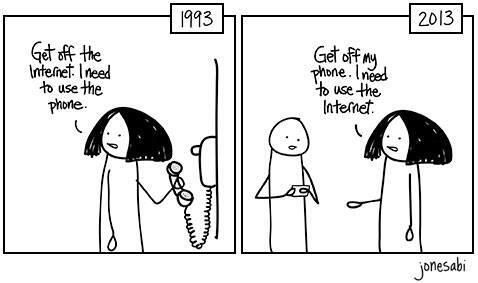
The Evolution of Internet Memes: A Tech-Culture Phenomenon
- 0
Internet memes have become an integral part of modern-day internet culture. What started as simple inside jokes and quirky images has grown into a global phenomenon that affects millions of internet users daily. In this article, we will explore the evolution of internet memes, their connection to technology, and the impact they have had on the tech-culture landscape.
1. The Birth of Internet Memes
The journey of internet memes traces back to the early days of the World Wide Web. It was in the 1990s when the internet slowly emerged as a platform for sharing information and, most importantly, connecting people from across the globe. With this newfound connectivity, the stage was set for the birth of internet memes.
These initial memes were often simple images or phrases shared via email or bulletin boards. They appealed to a niche audience who could relate to the humor and references embedded within them. The technology at the time, though limited in comparison to today, allowed for the spread of these memes, albeit at a slower pace.
2. The Rise of Social Media and Virality
The advent of social media platforms revolutionized how memes were spread and consumed. Platforms like Facebook, Twitter, and Instagram provided a fertile ground for memes to go viral. The ease of sharing, liking, and commenting on these platforms amplified the reach of memes, making them more accessible to a wider audience.
Social media’s real-time nature allowed memes to gain traction rapidly, with trends emerging and spreading like wildfire within hours. The element of virality associated with internet memes reinforced their place in the digital landscape and cemented their position as a tech-culture phenomenon.
3. Memes and the Tech Community
The tech community has been quick to embrace and champion internet memes. The humor and relatability found in memes resonate with the tech-savvy individuals who spend significant amounts of time online. Memes offer a way for tech enthusiasts to express their experiences, frustrations, or excitement within their community.
Furthermore, memes have become a means of critique and satire within the tech industry. They are often used to poke fun at popular technologies, tech companies, or even current events related to the tech world. The use of memes in this context helps initiate conversations and allows for a lighthearted approach to discussing complex topics.
4. Memes as a Reflection of Tech-Culture Trends
Internet memes serve as a reflection of the current trends and happenings in the tech-culture landscape. They encapsulate the collective experiences, opinions, and emotions of internet users, making them a powerful medium for cultural commentary.
In addition, memes have the ability to adapt and evolve rapidly. They act as a mirror to societal changes and can capture the pulse of the tech community at any given time. Whether it’s the latest technological advancements, controversies, or buzzworthy topics, memes offer a concise and humorous way to express and share opinions.
5. Meme Formats and Innovations
As technology continues to advance, so do the formats and innovations within the world of memes. Animated GIFs, image macros, and video memes have emerged as popular formats, adding dynamic elements to the meme culture.
Moreover, technological advancements have led to new creative possibilities when it comes to content creation. Memes now incorporate augmented reality, virtual reality, and even artificial intelligence, expanding the horizons of what memes can be and how they can be experienced.
6. Meme Marketing and Brand Engagement
The influence of memes has not gone unnoticed by brands and marketers. Memes have become a powerful tool for brand engagement and marketing, with brands leveraging popular memes to connect with their target audience.
By aligning themselves with trending memes, brands can tap into the cultural conversations happening online and establish a relatable image. This strategy allows brands to appeal to younger, tech-savvy audiences who appreciate humor and authenticity, ultimately helping them foster stronger connections with their consumers.
Conclusion
Internet memes have come a long way since their humble origins. They have become a ubiquitous presence in the tech-culture space, shaping how we communicate, engage, and entertain ourselves online. By understanding the evolution of internet memes and their connection to technology, we gain insights into the ever-changing dynamics of internet culture and the influential role technology plays in our lives.

